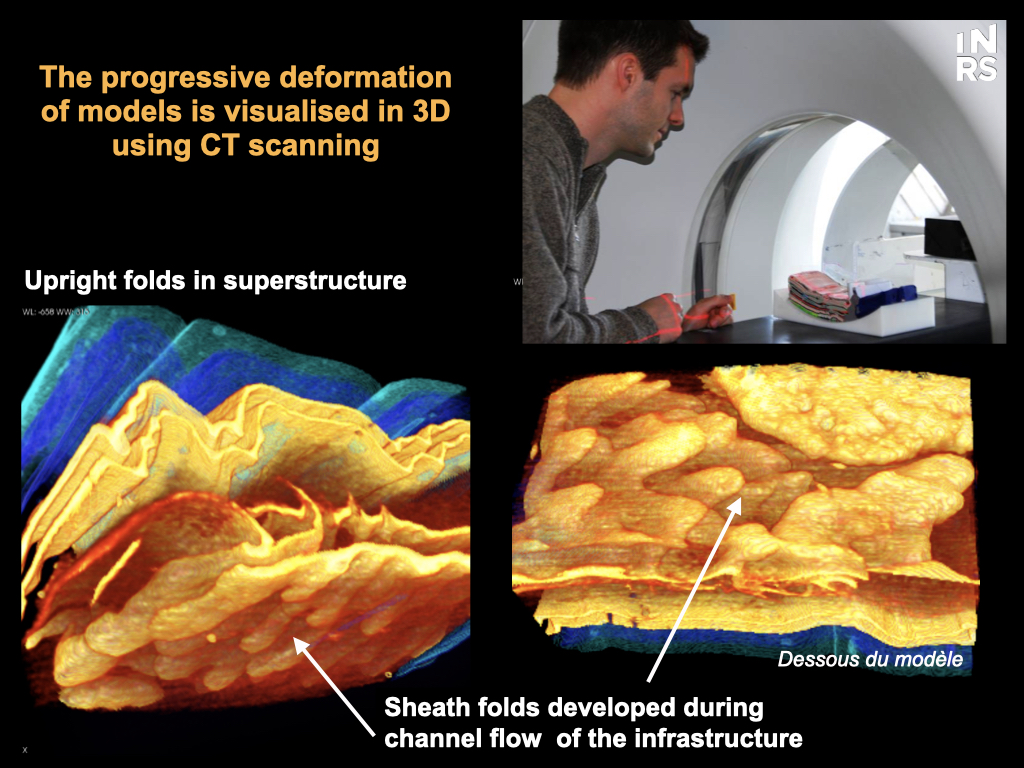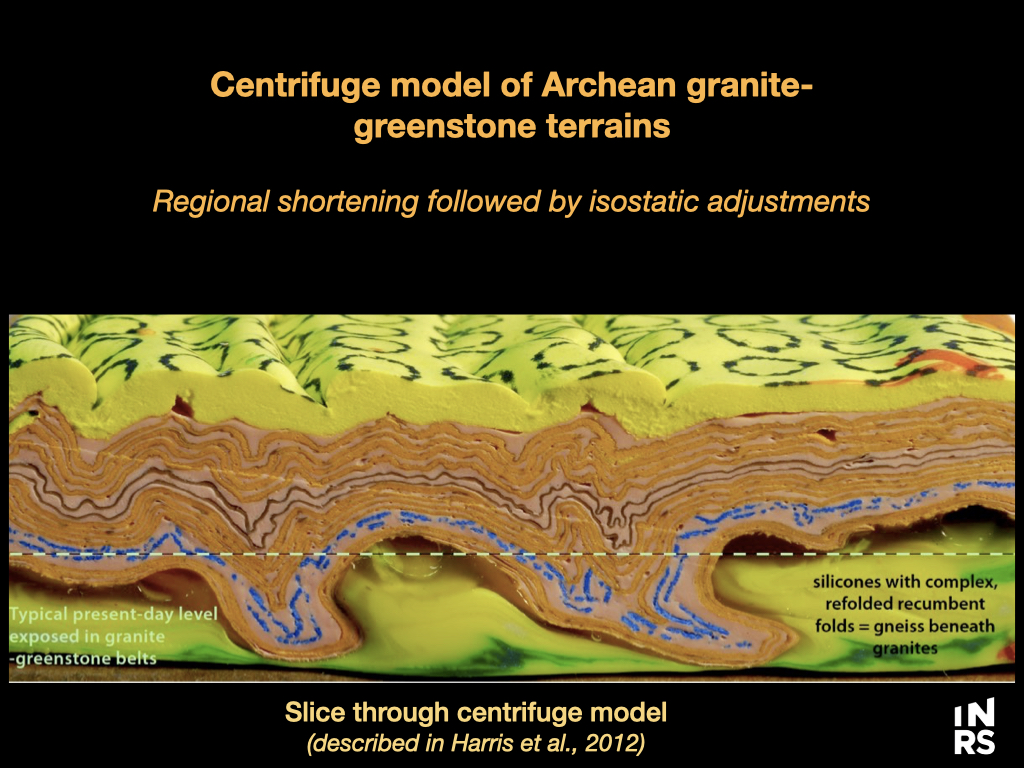- Home
- Research
- Research Facilities
- Find a Research Facility
- Physical Simulation Laboratory
The Physical Simulation Laboratory helps researchers better understand geological and tectonic processes using the deformation of physical models that simulate rocks at different depths in the Earth's crust.
The deformation of models composed of materials with different physical properties that simulate rocks at different depths in the Earth’s crust helps researchers better understand geological and tectonic processes. Using computed tomography (CT scanning), the progressive evolution of structures in models is observed in 3D (i.e. in 4D). Thus, the results help in the interpretation of field observations and geophysical data to better understand tectonic processes in the Earth, structural and tectonic controls of epigenetic mineral deposits, including critical and precious minerals, and hydrocarbon traps. The laboratory’s research also focuses on fundamental aspects of the tectonics of the ancient Earth and other telluric planets, such as Venus and Mars.
The Physical Simulation Laboratory includes:
- A high acceleration centrifuge (1000 g) that allows the deformation of models in modelling clay and silicone mastic to simulate the deformation of rocks in extension and shortening, also taking into account gravitational instabilities (e.g. to be able to simulate diapirism and channel flow in nature).
- Sandboxes that are used to simulate the brittle or brittle-ductile deformation of rocks and the evolution of sedimentary basins and fold and thrust belts.
- Other large modelling tanks allow the use of ductile, viscous and brittle materials to study lithospheric-scale deformation and the impingement of mantle plumes, etc. Strain calculations are carried out by PIV imaging.
Santolaria, P., Harris, L.B., Casas, A.M., Soto, R. (2022) Influence of décollement-cover thickness variations in fold-and-thrust belts: Insights from centrifuge analog modeling. Journal of Structural Geology, 163: 104704.
DOI: 10.1016/j.jsg.2022.104704
Godin, L., Soucy La Roche, R., Waffle, L., Harris, L.B. (2018) Influence of inherited Indian basement faults on the evolution of the Himalayan Orogen. Geological Society, London, Special Publications, 481: 251 – 276.
DOI: 10.1144/SP481.4
Harris, L.B., Godin, L.,Yakymchuk, C. (2012) Regional shortening followed by channel flow induced collapse: a new mechanism for “dome and keel” geometries in Neoarchaean granite-greenstone terrains. Precambrian Research, 212-213: 139–154.
DOI: 10.1016/j.precamres.2012.04.022
Yakymchuk, C., Harris, L.B., Godin, L. (2012) Centrifuge modelling of deformation of a multi-layered sequence over a ductile substrate: 1. Style and 4D geometry of active cover folds during layer-parallel shortening. International Journal of Earth Sciences, 101: 463-482.
DOI: 10.1007/s00531-011-0682-y
The Physical Simulation Laboratory was set up with funding from the Canada Foundation for Innovation (CFI).
Contacts
Lyal Harris
Professor and Scientific head
Phone: 418-654-2568
lyal.harris@inrs.ca
Boutaina El Jai
Partnerships and Research Development Advisor
Phone: 418 654-2531
boutaina.el_jai@inrs.ca
Physical Simulation Laboratory
Institut national de la recherche scientifique
Eau Terre Environnement Research Centre
490 rue de la Couronne
Quebec City, Quebec G1K 9A9
Canada


